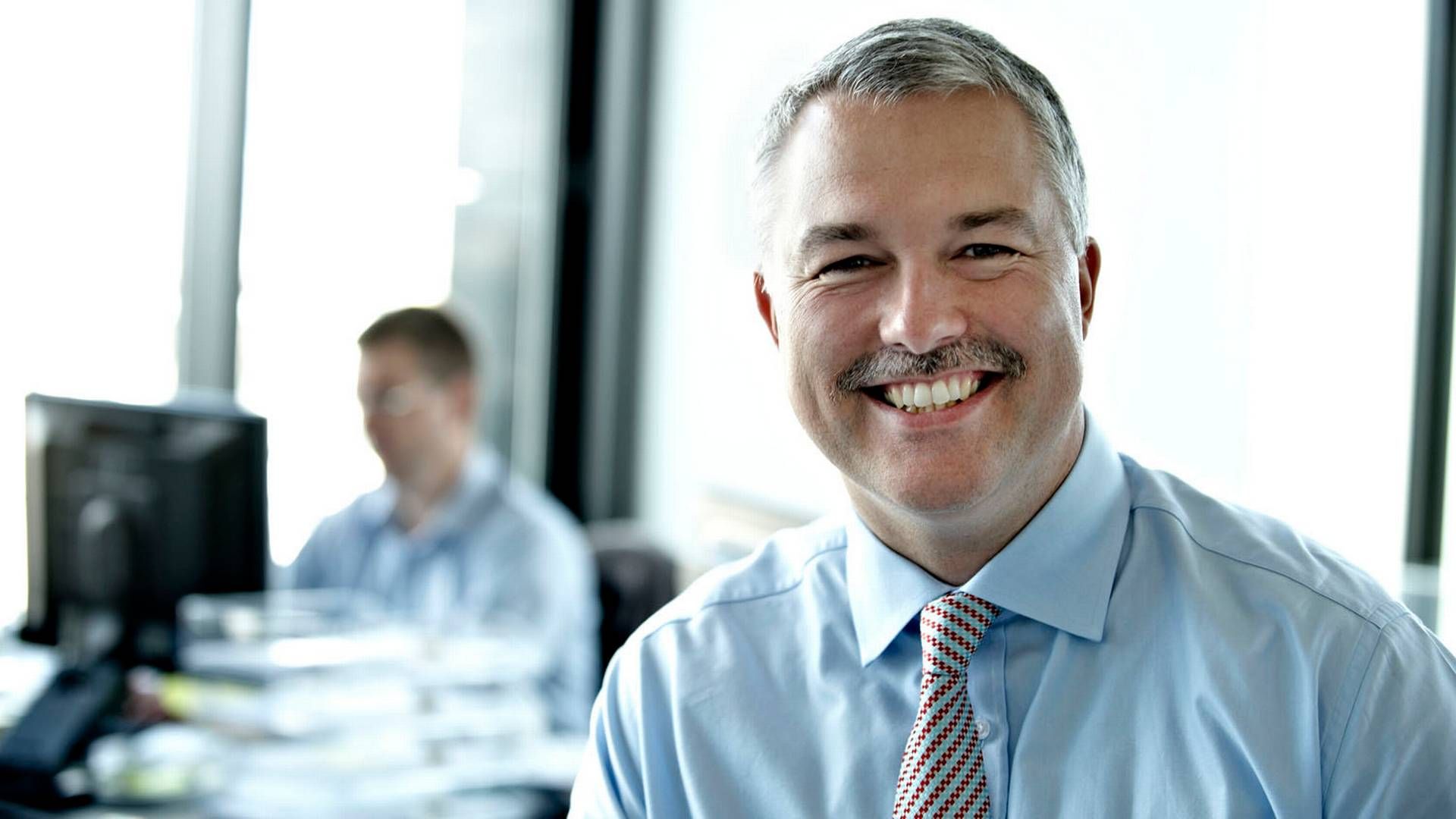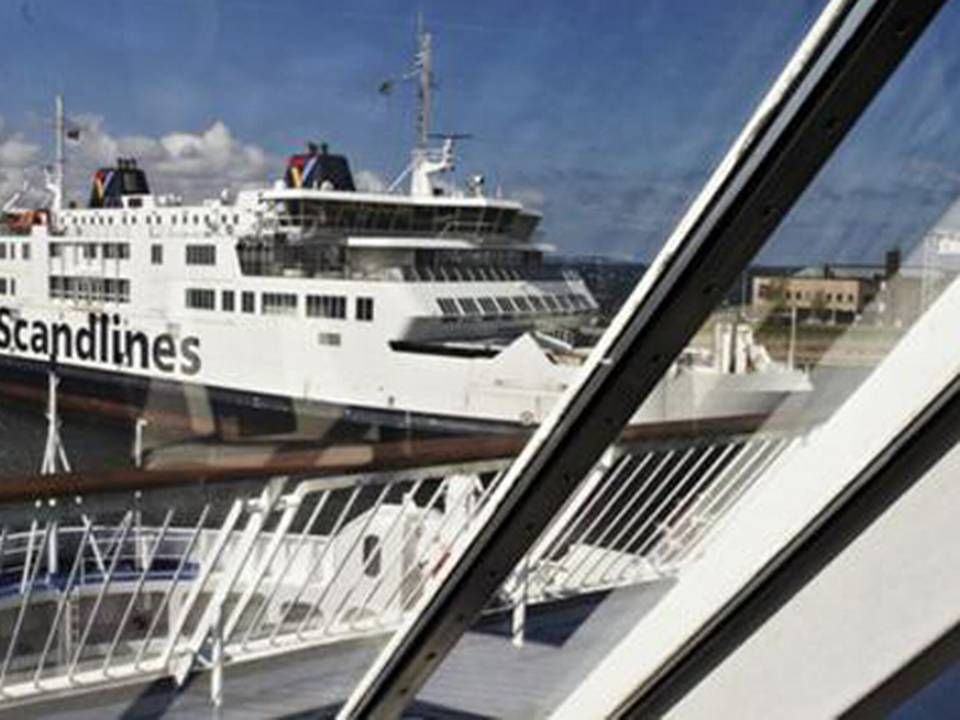Scandlines: In the middle of the sale

In the last three months, Søren Poulsgaard Jensen has been observing more than the impressive view from his sixth-floor office at Kalvebod Brygge in Copenhagen. During the last few months, Scandlines’ CEO has been able to regularly follow the media’s reports on the sale of the company he has been heading for the last 14 months.
And the reports are "exciting to follow, but ownership concerns owners", Jensen tells ShippingWatch.
Even though Jensen does not have much to say on the subject of Scandlines’ sale, he will gladly explain what kind of business Scandlines is, not least why it is interesting to a potential buyer. Scandlines is a company which according to Bloomberg has a price tag of 1.4 billion euros from the owners 3i Group and Allianz Capital Partners.
"When you look at Scandlines today, it is interesting because it is such a flexible company. We have 700,000 – 800,000 freight units, 11 million passengers, and add to that the cross-border trade. This often means that we do not experience in the same way the typical shipping cycles that you see other companies go through," says Søren Poulsgaard Jensen.
What are DFDS's strategic ambitions for Scandlines?
Of course, ups and downs come about in freight, passenger, and cross-border trade as well, but they happen at different times. Søren Poulsgaard Jensen hesitates to say that the company is resistant to cycles, but he believes that the company remains stable despite them.
As was the case with many other shipping companies during the financial crisis, Scandlines’ results were affected by the crisis for a number of years, but according to Søren Poulsgaard Jensen, the company is almost back to the pre-crisis level. In 2012, Scandlines saw a net turnover of 608 million euros and an EBITDA result of 193 million euros, an improvement in comparison with 2011, the EBITDA result for which was 182 million euros.
15 minutes
"We are pretty skilled at what we do. Our concept is to optimize everything so that the ship is only at port for 15 minutes. We empty it, fill it, and then out to sea again. I do not think that is done other places," says Søren Poulsgaard Jensen.
The short time at port means that Scandlines utilizes its capacity to a greater extent than others. The fifteen minutes constantly has to be considered and therefore, the company’s ships are built in a way that they can live up to said target. The ships have four or five main motors so that if a motor breaks down, another can take over. In this way, repair can be done as the ship continues to sail. Additionally, the ships have suspension decks which in the course of few minutes can be lowered if more passenger cars or trucks need to board the ferry.
”That is unusual because on a container ship or another ferry, they have the capacity they have. It is not like you can fit in 70 extra cars in the course of three minutes,” explains," Søren Poulsgaard Jensen.
Focus
Last year, Scandlines sold a handful of routes from Germany to the Baltic States and Sweden, which fell outside the tripartite business model with trucks, passengers, and cross-border trade and a short stay at ports. According to Søren Poulsgaard Jensen, this is Scandlines’ major competence and asked whether he could imagine Scandlines expanding its network of routes, Jensen remains careful.
If the company is to sail new routes, they have to be routes that fit with Scandlines’ model. The service must have the right length and there must be a sufficient amount – both of travel traffic, freight traffic, and retail or cross-border trade.
“If we were to do it, we would have to be entirely certain that we would succeed. But if I were to point to some opportunities, I would probably point to the English Channel , navigation between Africa and Europe or the Gulf of Finland.“
Scandlines confirms sale of freight routes to SOL Continent Line
Søren Poulsgaard Jensen does not hide the fact that he would feel ambivalent about muddling a concept which he contributed to honing last year.
“As CEO, it would feel a little strange because I have just been heading a process during which we have focused on the core of our competencies. I would like for us to continue doing that. Then you can always see what time brings and whether the opportunities are there. Yet if we conclude that we are doing the right thing now, we must continue to do that,” says Søren Poulsgaard Jensen.
Femern connection constitutes a threat
If we move a little further in time, things may not go so smoothly. The planned Femern connection between Denmark and Germany, to be completed in 2021, will affect Scandlines’ business to a great extent, says Søren Poulsgaard Jensen.
“It is a little difficult to put numbers on something that lies so far into the future. But if we say that our business on Rødby-Puttgarden will be reduced with two-thirds that gives an indication of how we see it. Today, this route is about two-thirds of our total business. So that is two-thirds of two-thirds of our business as it looks today, but we have time to change that fraction.”
Jensen concedes that it is a major part of Scandlines’ business that may be swallowed by the new connection. Therefore, the company also stands up for its position on the Gedser-Rostock connection so more people will choose said route instead of Rødby-Puttgarden. New and greener ships have been ordered for Gedser-Rostock which will sail from 2015, and via advertisements, the company has attempted to focus attention on the route.
Søren Poulsgaard Jensen expects that the three customer groups will continue to employ the Rødby-Puttgarden ferry despite of the Femern tunnel: trucks, whose chauffeurs’ schedules make room for rest hours onboard, people doing cross-border trade, and passengers who do not want to drive the 18 kilometers in a tunnel.
”But of course it will affect us to a degree. A lot of people will be driving there once the tunnel has been created. But we will continue to have a good business following that.”
Today, the most central thing for the company is that Scandlines continues to have equal access to the customers. If a motorway is converted to a highway or if three traffic circles get in the way of the route, it could have a major effect on both passenger or truck traffic.
“That is the only scenario we think we must secure ourselves against. Politicians must not forget us and must not distort competition. But extra competition must also be in the interest of everyone. Additionally, we have maybe 600 jobs in the Rødby area that are worth preserving, and I hope they will support us in this assessment,” says Søren Poulsgaard Jensen.
No one like us
Even though the Femern connection may steal a major share of the current business, Søren Poulsgaard Jensen remains optimistic.
“We must be prepared for the effect. But it is still quite a few years into the future and it could be that the development will be pushed further years into the future. In the meantime, we will do our best to prepare for the connection.”
When asked what a potential buyer of Scandlines can expect to gain if they purchase the company, Søren Poulsgaard Jensen responds in the following manner:
“If you buy Scandlines, you will get a well-run, hopefully well-managed, innovative, exciting, and stable company that can weather cycles. There is no one like us. We are unique. Our competitors will typically be Stena, TT Line, the Oresund Bridge, or The Great Belt Bridge, and they are very different from one another. Either they market themselves on their frequency or they market the experience. We are in the middle of those two and we are saying that traveling with us you get an experience and an opportunity for a break. That is how we position ourselves in relation to the two others now and in the future,” says Søren Poulsgaard Jensen.
DFDS CEO: We are doing well without Scandlines
Newspaper: Scandlines put up for sale
Scandlines confirms sale of freight routes to SOL Continent Line
Related articles
Newspaper: Scandlines put up for sale
For subscribers
DFDS CEO: We are doing well without Scandlines
For subscribers




















